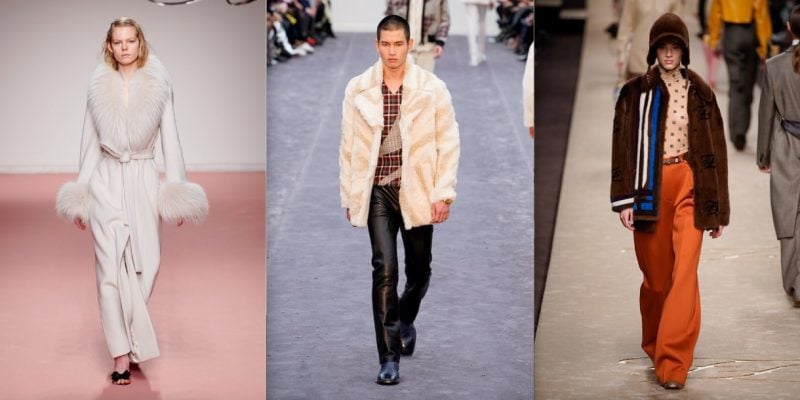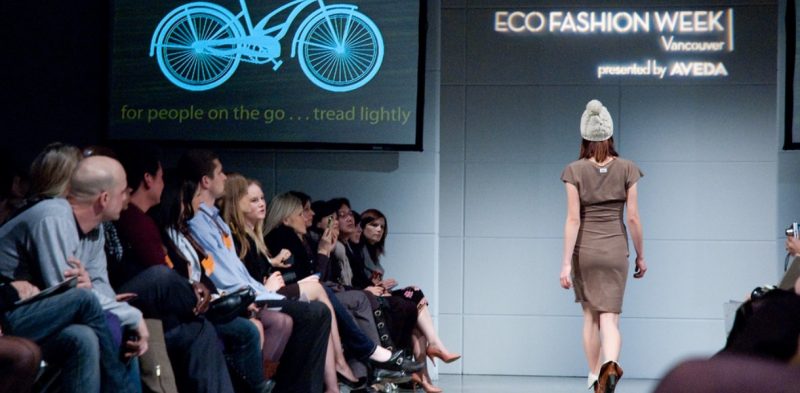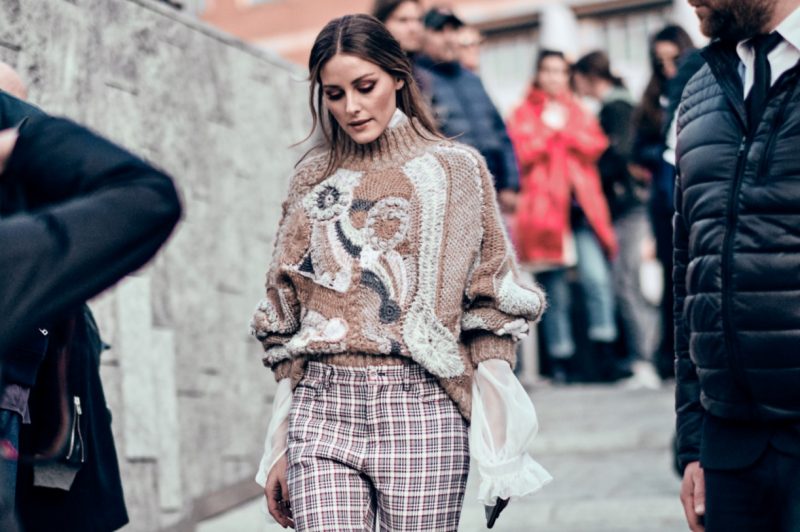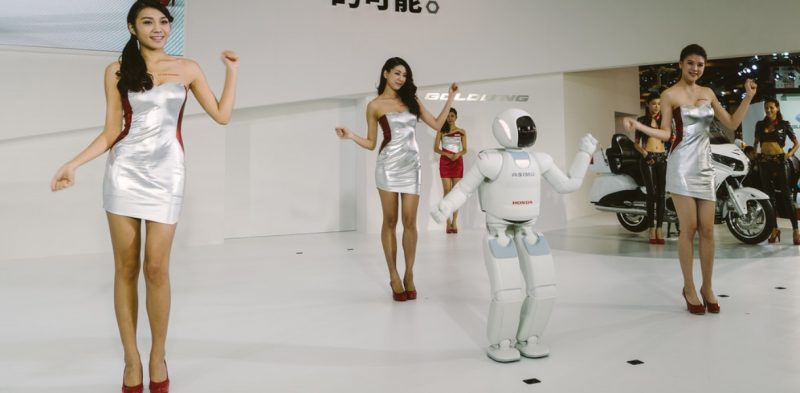The fashion industry has always been a hub of innovation, from the invention of the sewing machine to the creation of 3D printed footwear, but what can we expect the future of fashion to look like? The $2.4 trillion fashion sector is a global economic powerhouse of an industry, and its transforming quicker than ever before. But while artificial intelligence is being used to predict trends, augmented and virtual reality create at-home dressing rooms, and robots assist craftspeople in the atelier and models on the runway, are the same debates from the 1980’s taking place today going to continue in the future. In the final part of The Truth about Fashion, we uncover what’s needed in the future to fix fashion and finally put the issues that plague the fashion industry to rest.
In part 1 of this series, I dissected the debate between natural materials verses synthetic alternatives, concluding that a sustainable future in fashion must include natural materials if it is to be successful. Natural materials like wool, cotton, cashmere, leather and fur are all staples of fashions circular economy. Not only do these natural materials bring with them environmental and economic advantages, but they do so to no cost of the planet. However, while the advantages are plentiful and obvious, some consumers will only wear natural fur if it is vintage or has been inherited. This goes hand-in-hand with those who refuse to wear natural fur altogether and those who defy pressure to ditch natural materials and will wear the latest mink coat, sable stole or fox maxi coat unapologetically. So, if consumers are still exercising confidence when purchasing fur, how has it become the most polarising material within fashion? And will this change in a bid to fix fashion’s plastic problem?
Brands who have banned fur include Burberry, Chanel, Gucci, Versace, Balmain and Armani, this leaves fur houses like Fendi, Louis Vuitton, Dior, Yves Saint Laurent and many others to fly the flag for fur. According to Silvia Fendi:
“Fur is durable—you don’t even need to wash it—and totally biodegradable. When you have a fur from your grandmother in the closet, you can remodel it into a new shape. We don’t use fake fur, but sometimes we use chiffon, cashmere, and wool—all natural materials—to mimic fur. I like to give people the freedom of choice, and I think that this is an important issue, one to be taken seriously—but where do you stop? Do you stop using fur but still wear leather and eat meat? It is important to understand the source—just as you want to see, for example, how the chickens who produce your eggs are treated, you want to see where the fur comes from. I believe in total transparency—for every material we use, we have a certificate that you can trace.”

But if one of the most world’s most popular brands like Fendi is able to highlight the advantages of fur, why is it that some of the fashion crowd, and wider population don’t seem to be listening? And more importantly, will this carry in the next decade?
Well, to first answer this question we must revisit the argument set out in part 2 of this series which centres public attitude. While the term ‘Sustainability’ has only entered the fashion zeitgeist in recent years, it’s a term that is predicted to stick around for years to come. According to fashion experts around the world, we are all of the same opinion that the biggest problem for the fashion industry today and in the future is fast fashion and the environmental impact fast fashion has – over production, over consumption and excessive waste. Thus, if we are to fix the future of fashion so it can become sustainable, then the role of fur and all other natural materials must be is central.
This is the opinion of Danish designer and London Fashion Week Men’s staple Astrid Andersen who stated in Vogue:
“The Nordic mentality has always been about sustainability—we have a strong history of buying less and buying better. For me, fur is the most sustainable material you can work with—my mom still has the coat she bought 25 years ago. The biggest problem in the industry is fast fashion—and we also need to consider the environmental impact of producing fake fur. I understand that this is an emotional subject, but we need to have the conversation—it’s not black-and-white; there are nuances. Why is it that I can talk to a vegetarian and maybe be inspired, and there isn’t a bucket of red paint involved?”
Therefore, what can we gage so far about the tools needed fix fashion? Well, we must start with shifting attitudes regarding natural materials and recognise the ecological benefits they bring with them, not least of all because natural fur supports remote and indigenous Inuit communities around the worlds, but because they are durable, long lasting and can last anywhere from 50-100 years (many lifetimes compared to the 2-3 year lifespan of a fast fashion garment). The sooner consumers start to accept the reality that natural materials will create a sustainable future, then the road to fixing fashion has been paved.

Once the public attitude moves in favour of natural materials, designers will follow. More so now than ever before, designers are under pressure to create responsibly. Therefore, it is counterintuitive that designers are now giving into pressure to ban fur in favour of plastic alternatives. However, we are already seeing signs of fur bans being reversed. The first designer to show signs of this is Jean-Paul Gaultier. After announcing a fur ban in November 2018, the following July (2019) he announced he could go back to using fur is he could be sure it was entirely traceable. The timing of this announcement coincides perfectly with the upcoming launch of IFF’s traceability and certification program: FurMark, which is set to launch in 2020, answering the just demands of consumers and designers like Gaultier.
FurMark is the certification program that provides consumers and designers with the reassurance they need to confidently use and buy fur. It’s a world-class, comprehensive certification and traceability program that covers sustainability, animal welfare and the dressing and the dyeing of fur, so when it comes to purchasing the product, we can all be reassured that it meets recognised national and international standards. All certification programs and their protocols are publicly available, science based and approved by independent experts. Thus, already, we can see the demands of the fashion industry and consumers around the world are being met honestly and transparently by the fur industry. It is thorough this openness that attitudes will begin to shift meaning we are well on our way to fixing fashions future.
The road has been paved with a focus on sustainability, the foundations have been laid with attitudes starting to change in favour of natural materials, what is next in the future of fashion? The answer, according to online retailer Farfetch: Influencers. Farfetch Chief Executive Jose Neves stated:
First, a creative tastemaker able to leverage digital channels to engage a global community; second, a best-in-class design, planning and manufacturing; and third; direct-to-consumer global online distribution, complemented by a connected wholesale presence in the most prestigious physical boutiques.

Adding to this Fashionista is cited saying, “with mobile shopping, peer-to-peer e-commerce, and influencer marketing continually on the rise, social commerce is finally becoming the next wave of retail.” This includes the utilization of social media to reach Gen Z customers to reach “the first wave of consumers who effectively grew up online” according to Quartzy. Today, some brands already have more than 2,500 influencers within their network, this figure is only predicted to rise in the future.
While it may seem impossible to 100% predict with accuracy the future of fashion, one can look at trends to forecast where we might end up in a decade or two. So, in addition to a sustainability-centred, natural material heavy and influencer-dominated fashion landscape, what’s next? According to Vogue Australia – public fashion shows.
In a bid to further democratise fashion and marry the consumer with the brand, the British Fashion Council announced that London Fashion Week will be first of the “Big Four” to sell show tickets to the public. Fashion weeks are some of the most glamorous events in the world, but more than anything else, they are monolithic marketing performances with the primary purpose to sell the brand to consumers. The BFC’s decision to sell tickets means fashion lovers will be able to rub shoulders with celebrities, influencers and the fashion elite front row for the right price. This is an exciting prospect and signals a shift from the traditional elitist form fashion weeks usually follow.

To summarise, the final part of The Truth about Fashion predicts a sustainable future of fashion where natural fashion materials backed by a growing environmentally conscious public will be endorsed by influencers and readily presented to fashion lovers and luminaries via a public fashion show spectacle. We can all agree that the future of fashion looks exciting – a revolution is taking place fixing the issues that shroud it currently. And while we set sail on this new fashion voyage, we can be positive that as the public is moving towards ethical and sustainable products which include fur, we will all reap the benefits.





